With its rally inspired looks, KTM’s LC8 Adventure is far the sportiest-looking big trailie on the market, and with a chassis developed on the Dakar rally it offers a riding experience to match. Best of all, you can now pick up a secondhand version pretty reasonably..! Like the sound of that? Read on…
History
Having taken the Mattighofen factory from bankruptcy to domination of the European dirtbike market, KTM CEO Stefan Pierer then set his sights on the ‘roadbike’ market. And rather than jump straight in with what we’d consider a TRUE roadbike (though that would follow shortly after in the shape of the SuperDuke) he bridged the gap between dirt and tarmac with a big trailie…
The concept was first shown at the Munich show in 2000, and whilst the bike looked very much like a prototype, certain characteristics (the basic shape, the twin cans, the headlight etc) did make it into production. Fortunately the translucent orange panelling on the side was dropped…
Whilst most manufacturers subject their bikes to some gruelling testing before putting them into production, the 950 Adventure’s beginnings were arguably the toughest of the lot. Because the bike grew from the 950R rally racer which the late great Fabrizio Meoni took to overall Dakar victory in 2002!
The production Adventure was finally launched the following year (2003) and caused something of a minor sensation. With a large upright fairing, twin tanks, and sidepanels shaped like competition numberboards, it looked just like the rally bike. The rest of the big trailie market were either wacky (BMW GS, Aprilia Caponord etc) or Plain Jane (Varadero, V-Strom etc) so it stuck out like a hard-working Tube train driver. And it backed up the looks with great performance, though it’s fair to say that it took a while for it to be accepted by the roadbike market – perhaps because it looked just like a dirtbike!
Timeline
2003: 950 Adventure introduced and two versions were available: the standard, lower seated (880mm) model in silver, and the orange-painted ‘S’ model with 35mm taller suspension (915mm seat height).
2004: The standard version became available in gloss back, orange or silver. The ‘S’ model was painted blue with ‘Go!!!!!!!’ graphics. Of course, it was a homage to the Gauloises-sponsored rally bikes… Centrestand now fitted as standard.
2005: Modifications, including a new stepped seat, reduced the seat height of the standard model by 20mm (to 860mm) – a move intended to broaden its appeal. The ‘S’ model was still blue, though the graphics were revised, and it too received a 20mm lower seat height, though the saddle itself wasn’t stepped. Both bikes saw internal engine changes, resulting in smoother and quieter running.
2006: Now called the 990 Adventure (capacity increased to 999cc) and fitted with fuel injection and floating front brake discs. ABS became standard fitment on the lower seat version, which came in either flat black or flat orange. (with the colour impregnated into the tanks’ plastic, rather than being painted on.) The bike also got a revised stepped seat. The ‘S’ model didn’t get ABS and retained its blue colourscheme, albeit now with ‘Dakar’ logo and script on its flanks.
2007/2008: Both models remained relatively unchanged other than minor details, such as a ‘power take off’ point mounted in the speedo console.
2009/2010: The Adventure was given both engine and cosmetic changes. With new cylinder heads, new cams, lighter con-rods and crank, tweaked EFI and modded exhausts, the standard bike gained an extra 8hp (up from 98hp to 106hp) and the motor became smoother too. The regular 990 came in orange/black or stunning white/black (though its ‘thornbush’ graphics looked more like a spider’s web…) with the swingarm, calipers and fork lowers painted black. The ‘S’ was renamed the ‘R’ to bring it inline with the rest of the KTM range, and along with the aforementioned new engine components the factory also mapped it to produce a claimed 115hp. The ‘Dakar’ graphics were swapped for black and white bodywork and an orange frame, similar to other R-model KTMs. Detail changes for both models included the tank-top console being changed to lockable push-button opening rather than Dzus fastener, new style clocks, and the power socket being enlarged to cigarette lighter-size.
2011: Standard model and ‘R’ model remained largely unchanged, with the exception of revised speedometers. However, a new limited production run ‘Dakar’ model was added to the range, which used the chassis of the standard model and the 115hp engine from the R. It came with ‘Dakar’ blue coloured bodywork, an orange frame and a suede-alike seat.
2012: The standard bike has received the same spec motor as the ‘R’ model, giving it 115hp. Standard bike looks more like previous year’s Dakar model, with faux-suede seat, orange frame and engine bars and orange handguards. Comes in either blue or white.
The Engine
The Adventure was the first production bike to house the ’950’ LC8 motor, a DOHC 75-degree V-twin initially displacing 942cc. With a bore of 100mm and a stroke of 60mm it’s very ‘over-square’ architecture…
Designed to be lightweight (it weighs just 58kg), the engine runs a ‘multi-functional shaft’ which drives the waterpump and acts as an idler for the starter and the timing chains. To help keep the LC8 compact the starter motor was situated in the valley between the two cylinders and coil sticks were used in place of the more traditional HT lead and separate coil set-up. Twin-pump dry-sump lubrication, with the oil tank located on the next to the front cylinder on the right-hand side, ensures that the engine isn’t overly tall either. The gearbox is a 6-speed unit, with chain final drive.
Feeding the 950 LC8 is a pair of 43mm Keihin CV carbs, which were ditched in 2006, in favour of 48mm Keihin throttle bodies… Alongside the EFI the motor grew in capacity. An extra millimetre on the bore and 2.4mm on the stroke gave a displacement of 999cc and an increase in bottom-end torque too. Curiously, despite the use of new cams, revised heads and lighter pistons, at the time KTM claimed the peak power and torque figures remained the same as the 950’s. 2009 saw another evolution of the motor, with a further change of heads and cams, plus revised fuelling and altered endcans. Since then, other than mapping tweaks, little has changed…
The Chassis
The main frame is a cro-moly trellis, with an aluminium subframe bolted on out back. The tube-work is nicely designed, so it’s perhaps unfortunate that it’s largely buried beneath plastic bodywork. Still, if you’re going to cover up such metalwork then it might as well be in a set of ‘still fresh nine years on’ rally-rep clothes! Apart from a few small tweaks to the lighting, screen and tanks, the Adventure’s styling is the same as it was in ’03.
The fuel tanks are an important aspect of that styling, stretching down on either side to help keep the weight low. They’re essentially separate tanks, so even though they are linked with a small tube you should fill them both when you fuel-up. Incidentally, if you put the bike on the sidestand to fill-up, then do the righthand tank first. Otherwise when you top-up the left side you risk overfilling them. Combined, the tanks hold approximately 20-litres (EFI) or 22-litres (carb).
The WP suspension is top notch. The 48mm USD forks and PDS shock are fully adjustable and the ride is firm enough to feel sporty, without being harsh and uncommunicative, yet soft enough to be comfortable for long hours in the saddle. Crucially, it’s capable of withstanding off-road abuse without crashing to its bumpstops or launching you into the stratosphere. At the rear there’s a handy fold-out remote preload adjuster so that you can quickly and easily adapt to the added weight of a pillion or hefty luggage.
At a time when almost all of the established competition were running 19in front wheels (often matched to a 17in rear), KTM took the bold move of sticking with the dirtbike-size 21in rim, and using an 18in wheel at the back too.
As with all modern day KTMs the brakes are Brembo, in this case twin two-piston calipers and 300mm discs upfront and a 240mm disc at the rear. The front brakes were beefed up with floating discs in 2006, and at the same time the standard model was given Bosch ABS (switchable with a button beside the speedo).
The clocks have always incorporated a digital speedometer and an analogue rev counter (the best of both worlds). You don’t get quite the same level of info that you might on certain other adventure bikes – for instance there’s only a fuel light not a gauge – but there are twin trips, an odometer, temperature gauge, and a clock, and it’s all nicely presented, easy to read and simple to use.
A really nice touch is the tank-top cubbyhole, secured with a Dzus fastener on early bikes and push-button (and lockable) opening on post 2009 machines. It houses the fuses, with plenty of room to spare for sunglasses, your phone, a tuna sandwich – whatever you want to stash within! It’s great for holding toll tickets and change on foreign motorways so that you don’t have to ferret around in your pockets for them…
Riding one
Climb aboard and you soon realise that although the Adventure isn’t tall in traditional dirtbike terms, the wider seat means it feels like it is. If you’re short, or just short in the leg, then an R or S model may be a bit of a stretch. The pegs, proper dirtbike items with removable rubber cleats, are low enough so that the riding position isn’t cramped without being TOO low, and the braceless bars are set relatively high. Anyone familiar with the EXC will certainly notice a family resemblance – the ergos are by far the most ‘dirtbike’ of all the big trailies.
The Adventure seems reasonably large up until you pull away, at which point it suddenly transforms into something light, lithe and nimble. The weight really does seem to disappear.
Not much happens sub 4000rpm, both the 950 and 990 are a little rough and grumbly low down. Give it some gas and this soon passes as the motor builds revs quickly and the midrange surge kicks in. At around 7000rpm there’s seemingly another hike in the power and at this point in the rev range things are happening pretty quickly. It’s an incredibly engaging ride and gives the bike something of a split personality – short-shift and it’s civilised and sensible, cane it and it’s hugely entertaining.
If you’ve any interest in the V-twin KTMs then you’ll doubtless have heard stories of snatchy power delivery on the fuel injected LC8s, and we’ve got to tell you that those tales are only part true. Somewhat annoying for anyone looking to buy a 990 Adventure, how smooth the fuelling is varies on individual bikes. Some that we’ve experienced have been lousy – mainly surging on a part throttle, and being incredibly sensitive to the SLIGHTEST change in throttle position – whereas others have been almost as smooth as carbs. The problem shouldn’t be confused with sharp throttle response, as this is a trait of all EFI-equipped LC8s and once you get used to it you actually appreciate the feeling of ‘connectivity’ that it gives. Some owners fit aftermarket throttle tubes, which use a different shaped ‘cam’ to alter the pull of the cable and make it more gradual. These aren’t to everyone’s tastes, mind you, and if one’s been fitted to the bike you’re looking at we’d ask for the standard tube too. A decent aftermarket pipe and fuelling tuned to suit certainly helps matters…
The carb-fed 950 wasn’t immune from a little snatchiness too, and again this varied from bike-to-bike. The cure was simple and reasonably inexpensive (see ‘Popular Mods’ for more details).
You’d be forgiven for thinking that the 21in front wheel would slow-up the handling and make the Adventure reluctant to turn. But c’mon, this is a KTM. And so the bike readily tips into turns and will hold a line without too much effort. It’s easily on a par with most 19in front-wheeled trailies. Despite the long travel forks and shock, wallowing through fast turns isn’t too much of an issue on well set-up suspension – just allow for the front-end dive when braking hard for slow corners…
The Adventure’s brakes have always come in for a certain amount of criticism, even when they updated the fronts to floating items. The twin two-piston calipers give good feel they just lack power compared to most road set-ups which, let’s face it, is what they’re judged against because most of the opposition are tarmac-oriented. I guess we’d describe the on-road braking as adequate.
Vibes aren’t a huge issue, they’re noticeable though rarely intrusive. Expect the odd tingle through the pegs, more so if you remove the rubber cleats, and a little through the bars too. Turbulence can be a problem for taller riders (six foot plus), as at speed the wind rushing over the screen just catches your head. A taller screen is a Power Parts accessory.
The flat seat of the R/S models allows you to move around when your butt starts to fall asleep and lends the bike more of an off-road disposition. Many riders doubtless find the more sculpted, stepped seat of the 2005-on standard bike more comfortable and cosseting for high mileage jaunts and, of course, if you’re not sold on either version you can pick up aftermarket replacements or a gel version from KTM.
Don’t expect fantastic gas mileage, as the LC8 has always liked a tipple. We’ve heard of some riders getting over 200 miles from full, though we suspect that they’re modern day saints who freewheeled down hills and slipstreamed juggernauts. Bank on getting somewhere between 140-180 miles, depending on how and where you ride it!
With its rally beginnings, 21/18in wheels and (reasonably) long-travel suspension you’d expect the Adventure to be handy on the dirt and it certainly is – it rides just like a big dirtbike. As you’re not perched right over the headstock you do need to steer it with the rear wheel at times, though the front-end is one of the most communicative of all the big trailies’ so you don’t need to drift it into and out of EVERY corner (even if it is huge fun!). And whilst foot-out cornering feels pointless on other bikes in its class, on the Adventure it seems to make sense.
If you’re really hauling ass – on a fireroad perhaps – then it’s not unknown for the Adventure to suffer a little headshake on bumpy going. We’ve never experienced it on the road, but we’ve had it before on the dirt aboard the Adventure AND other LC8 off-roaders so if you are looking at riding the UK rallies we’d suggest ensuring that your suspension is set-up to suit your weight/riding, and if the same happens to you then a steering damper will help minimise those ‘oh my god’ moments.
Brakes which simply felt ‘okay’ on tarmac really come into their own on the dirt, with enough bite and a fantastic level of feel. Should you forget to turn the ABS off then it’s not the end of the world, because although it’s not much cop on slippery mud or wet grass it does work remarkably well on most surfaces. Don’t forget that when you kill the ignition the ABS resets itself…
Thanks to KTM giving the LC8 lump a little of the traditional V-twin character, rather than making it silky smooth, it does find decent traction and will happily chug its way out of mudholes or up climbs. That’s not to say that it’s not an old lugger like an early Tenere or BMW Xchallenge, just that it does find grip far better than something like an F800GS or 800 Tiger.
One of the biggest differences between the KTM and most other adventure sports bikes is that the suspension is designed to more than simply COPE with the occasional off-road jaunt. For the average rider, the WP units of even the standard bike do a grand job of smoothing out the trails and it’s really only ‘expert’ level riders who’ll push its, or certainly the S or R’s, abilities. In such instances, it’s not too hard to slot-in a set of higher specced forks from elsewhere in the orange range.
Servicing
Service intervals are every 4500 miles, alternating between minor and major services. Every 9000 miles the valve clearances require checking.
Popular Mods
Whether it’s the Adventure’s sporty nature, the fact that it’s just like a big dirtbike, or the legions of accessories that are available for it (from both KTM and the aftermarket) it’s hard to say, but the bikes seem to get ‘modified’ far more than most other big trailies. Some of these mods are good. Others are not. As always, check that they’ve been conducted well and don’t pay over the odds for shiny anodised trinketry – it should add nothing to the pricetag! On the whole two types of accessory add value to an Adventure: decent aftermarket exhausts and luggage.
The combined weight of the original stainless steel cans is a hefty 9kg and with cats inside they also get incredibly hot. Akrapovic are the pipes of choice for these bikes, and if you want new ones they are only available through KTM dealers. They’re not cheap, but they’re well-made, give a useful performance increase, add value to your bike and fetch good money secondhand. Slovenian company Wings produce a decent alternative, as they specialise in KTM pipes. Whatever brand of exhausts are on there, try to get the stock parts with the bike and find out if the carbs or mapping have been adjusted to suit.
Luggage is always a nice extra to get with a secondhand machine, and even if you don’t want it for yourself, if you’re likely to be selling the bike in a few years it’s something that increases its value and will tempt future buyers. Hepco and Becker produce the official parts, and it’s tough stuff.
The small plastic frameguards from the Power Parts catalogue are well worth the 16-or-so quid they cost in order to protect the frame paint from your boots. They’re available in black or orange, so they’ll match any standard frame.
If you’re planning on frequently taking your adventure off-road then an HD bashplate is a wise investment. The standard part isn’t overly flimsy but this is a 200+kg bike and clanging it into rocks can do some damage… Expect handguards as standard, though again we’d suggest some HD versions (with an alloy backbone) if you’re planning on hitting the dirt. The plain ol’ plastic type can flex on impact and you still end up snapping a lever.
The 21/18in wheelset limits the range of road tyres that are available, though it does mean that you can fit a proper knobbly to the front. You can slip an enduro tyre on the rear too, though the rim is wider than an EXC’s and the 990 will destroy a regular knobbly in pretty short order. For the dirt a lot of people run a knobbly up front, and then use something like a TKC80 or a Michelin Desert on the rear.
A common mod for bikes that spend a lot of time on the lanes or at rallies is the fitment of an enduro front fender in place of the low-mounted ‘rally’ style mudguard. The stock part is fine for normal use and in dry conditions – it’s when the tyre starts to fill with mud that you get clearance problems.
The standard 950 motor can be improved upon with a few small modifications and a modicum of carb fettling. Removing the snorkel from the airbox and lifting the needles one groove from standard (to richen it up a bit) eradicates the snatchiness that afflicts some bikes and helps give an increase in oomph. Taking things further, there are numerous tuning companies and dealers who offer intake kits to improve the 950, many of which modify the airbox even more.
On the 990 removing the snorkel has less of an effect, and other than exhausts and mapping to suit, the most common ‘tuning’ work is aimed at smoothing out the delivery rather than building bhp.
There’s a bunch of what we’d describe as ‘emissions gubbins’ fitted to the Adventure, and a lot of owners look to ditch it. However, it is worth noting that removal of the Secondary Air System alone does nothing to the performance of the bike (unless you count the small weight saving) as its function is simply to introduce air into the exhaust to help reduce emissions. It’s claimed that removing it makes the exhaust gases cooler and therefore kinder to aftermarket cans, and if the bike’s still running the stock, cat-equipped silencers then it’s better to keep the SAS in place as it helps prevent premature failure and aids them in their job. Perhaps. One thing that removing it should do is lessen the popping ‘n’ banging you get on the over-run.
Finally, if you’re heading off around the world then the EFI’d Adventure has the capability of being set-up to run on poor quality fuel. Remove the seat, and look for a brown wire on the left-hand side. Find the connector on this wire, split it and you’re all ready to go on whatever bizarre concoction the ‘bush garage’ is masquerading as petrol that day.
What Goes Wrong?
The LC8 is inherently strong and capable of seeing some very high mileages. That said, there are a few points which are worth knowing; a couple of areas which require regular maintenance and certain parts which are known to give trouble.
Perhaps the best documented of all these is the failure of the clutch slave cylinder, located down by the front sprocket. More prevalent in hot conditions, you’ll know when it’s on its way out because the clutch lever will lose its pressure and you’ll ultimately be left without a functioning clutch!
If this occurs, most people whose bikes are out of warranty opt for an aftermarket unit rather than replacing it with an OE component. UK-made Oberon parts are probably the most common over here, with Evoluzione another popular brand. These generally offer an increased piston size (for more reliable action) or an extra seal (there’s only one on the standard part) for added reliability.
Sticking with the clutch side of things, 30,000-40,000 miles can see the clutch booster start to wear. This is a centrifugal ‘dog clutch’ which helps prevent the clutch from slipping, and if the bike judders twice when pulling away from cold, yet is fine when up to temperature, then there could be a problem. Catch it early enough and it’s a couple of hundred quid fix. Let it get progressively worse and it can lead to problems with the clutch itself… and a far bigger bill!
Some early Adventures had starter clutch issues. You’ll know when this is playing-up because of the horrendous clanking noise when you thumb the starter button – not a problem that’s easily disguised!
Waterpump shafts, and their seals, on 950s and early 990s have been known to go, usually once the bike has clocked up around 20,000 miles. If a bike’s losing coolant, yet there are no obvious leaks, and the temperature gauge is fluctuating more than usual (these bikes do run hot in traffic) then it’s probably the waterpump seal. Another sign, if it’s been on its way for a long time, is the oil light flashing on start-up. This is because the coolant/oil sludge can start to clog the filters and cause low oil pressure when cold.
Because the oil/coolant gloop rarely shows up on the dipstick the best way to check for this is to whip the clutch cover off, as it’s inside there that it seems to collect. Will a seller let you do this? Probably not, so ask if there’s been a problem and think about budgeting for its replacement if you’re looking at an old bike. The good news is that the shaft was given a new coating on later machines, so once the work’s been done (and it’s not an expensive fix) it shouldn’t give problems again.
Even though they’re fitted with heaters, the 950’s Keihin carbs aren’t immune from carb icing. It’s a hard issue to detect when buying a bike, as the conditions have to be just right for it to occur (generally a few degrees above freezing, a little damp in the air, and a long fast run at a steady throttle). Some owners live with it, others use a fuel additive such as Silkolene Pro FST to prevent it from happening. Or the other option is to fit the carb heater temperature sensors from a Suzuki Burgman, which kick-in at a slightly higher temperature than the Austrian parts and are apparently a direct replacement..!
Another issue which only affects the 950 is fuel pump failure due to its ignition-style contact points wearing out or corroded connections (the EFI’d 990 runs a different style of pump). Assuming a clean up of the contacts doesn’t solve the problem then the fix for this is often to fit a solid-state part, such as a Facet item.
The clocks on later (2009-on) machines can mist-up with condensation in really wet weather or if you aim your jetwash straight at them. To cure this you can remove the clocks and take the outer cover off, cleaning the condensation out (possibly adding some anti-fog spray to the inside of the cover) then reassembling with a smear of silicon around the seal.
Certain issues arise through a lack of maintenance or owners not realising wear problems may occur. For example, water can get inside the swingarm and seize the threaded chain adjusters. Some owners drill a hole in the underside towards the end of each arm of their swinger to let the water drain out, though if you don’t fancy this it’s worth daubing some copper grease onto the thread where it runs into the swingarm.
Drop the bashplate and check the condition of the electrics within. Housing the battery and such ‘gubbins’ as the starter solenoid in the area beneath the front cylinder keeps the weight nice ‘n’ low – the problem is that the components can get covered in crud. Roadsalt gets in there in winter; water floods in when crossing streams; and a muddy trail ride can see the bashplate filled with goop. Naturally, none of this is any good for the bike’s electrical wellbeing, and corrosion can easily wreck connections and components! We’d recommend a good dose of dielectric grease or petroleum jelly on those key areas to keep them water resistant. A peak inside the bashplate will tell you how fastidious the owner’s been…
Check the wheel rims for dings. These are 220kg machines and if you go clanging them into holes and rocks it’s easy to inflict some damage. However, Adventures are incredibly robust and do crash well so the odd off-road skirmish is unlikely to cause too many problems, especially if the bike’s been fitted with engine bars.
Overall fit ‘n’ finish is excellent – on the whole much better than its contemporaries. Expect a little pitting and rust on bolt heads if a few-year-old bike has been used all year round, though any major corrosion is a sign of neglect. The paint on the outer engine cases isn’t brilliant, and if it gets chipped and starts to flake then water gets behind it and exacerbates the problem. Otherwise, simply look for the usual secondhand bike issues…
Recalls
There have been three official ‘recalls’ on 990 Adventures. The first affected 174 bikes built between the start of December 2005 and the end of May 2006, and was issued because there was potential for water to get into the ABS override switch and prevent the ABS system from working. The original part was simply swapped for a modified item…
The second recall again involved bikes built between after 1st December 2005, though this time those built up to the end of January ’07 were also involved. The problem was the potential for air build-up in the rear brake hose and KTM changed the affected parts and rerouted the hose. 377 machines were affected.
Finally, 245 bikes were involved in a recall involving the chainguide, and the potential for it to come loose. The answer was to simply add some Loctite to the bolt threads and refit it!
Crucially, KTM dealers can look up a bike’s history via the frame number, so it’s easy to check what work has or hasn’t been done.
What’s it Worth?
The bike hasn’t seen the sales success of the GS and the numbers brought into the UK have never been huge, which means in the early days the Adventure didn’t hold its value like the big Bee-Em. Then, as KTM started to make real inroads into the roadbike market and people thought of them less as a dirtbike manufacturer, prices started to firm-up. Today the residuals are very good indeed.
A little confusingly, prices are hugely dependent on the specification, mileage and whether they’ve been well maintained. For instance, one dealer we spoke to suggested that a 2006 model with Akrapovic exhausts and Hepco and Becker luggage could easily sell for more than a regular, lesser-equipped 2008 model. It’s therefore all but impossible to suggest a price for any given year – you really have to look at individual bikes.
S and R models command a premium over their regular-model counterparts, and this could easily be £500.
Expect anything too cheap to require some real work. They’re incredibly rare, but we have heard of bikes being bought privately for less than £3K. If it’s too cheap then there’s probably a good reason…
So do you want one?
Overall, the Adventure is a real ‘everyman’ machine. It’s civilised enough to be a low-stress long distance tourer; handles predictably on the roads with a light and nimble feel; has by far the most ‘rally bike pose’ of any mass produced bike; is endowed with a punchy motor and ‘giant dirtbike’ character that’s a recipe for unbridled silliness: and comes with a chassis spec and level of finish that is absolutely top notch. If you’re after a one-bike-does-all machine then it’s a serious contender, and if you think big trailies are staid, well, you really need to try an Adventure!
Thanks to: Andy Clues and Ross Walker at KTM UK 01280 709500 www.ktm.com
Jason and Jack at The KTM Centre 01442 255272 www.thektmcentre.co.uk
Clive at Tri County Motorcycles 01344 424282 www.tricountymotorcycles.co.uk
Nick at PDQ Motorcycle Developments 01753 730043 www.pdq1.com
ALTERNATIVE TWINS
Don’t quite have the budget for the Austrian bike, yet still fancy a characterful twin cylinder trailie? Then consider one of these…
BMW R100GS
Cool (in a Germanic utilitarian kinda way) air-/oil-coiled Boxer that could definitely be viewed as an appreciating classic. Tidy PD (Paris Dakar) versions are now fetching silly money, so look for a nice standard model and maybe think about modifying it to suit your tastes/needs.
Honda XRV750 Africa Twin
If you look hard and bargain even harder then you should be able to pick up a reasonable AT for a reasonable price. It might not be a low mileage bike and it probably won’t be in the most desirable colourscheme, but it will have that wonderful Honda V-twin loping power, classic looks, and won’t depreciate much further either.
Cagiva Gran Canyon 900ie or Yamaha XTZ750 Super Tenere
Funky bodywork and a lovely air-cooled Ducati motor, or pretty ‘80s rally styling and a revvy parallel twin..? Italian road-biased adventure sports or Japanese trailie all-rounder? Both engines are strong, the weak points will be the Canyon’s electrics and the Tenere’s gearbox (it was always notchy and second gear gave problems).
Honda Transalp
We’re talking real ‘bargain basement’ bikes now – don’t expect anything TOO tidy for under £1500. But if that’s all you want to spend and you fancy a twin then we’d suggest a Transalp. For this money you’ll get a mid-to-late ‘90s 600 with the shotgun rear silencers, from a private seller. Don’t expect too much in the way of off-road prowess, think of it more as a dual sporter that’s capable of the odd gentle lane.



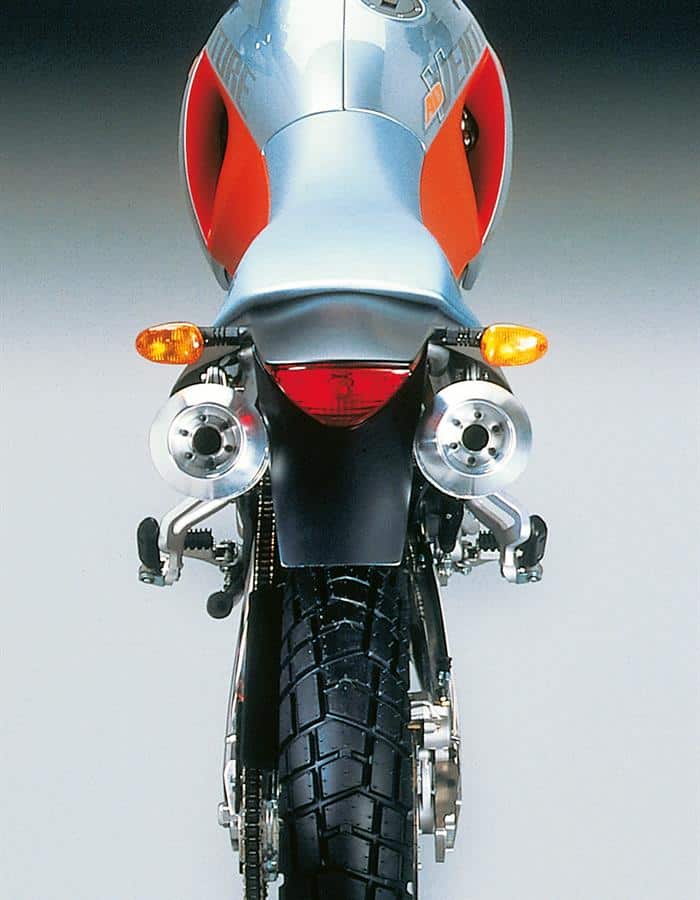
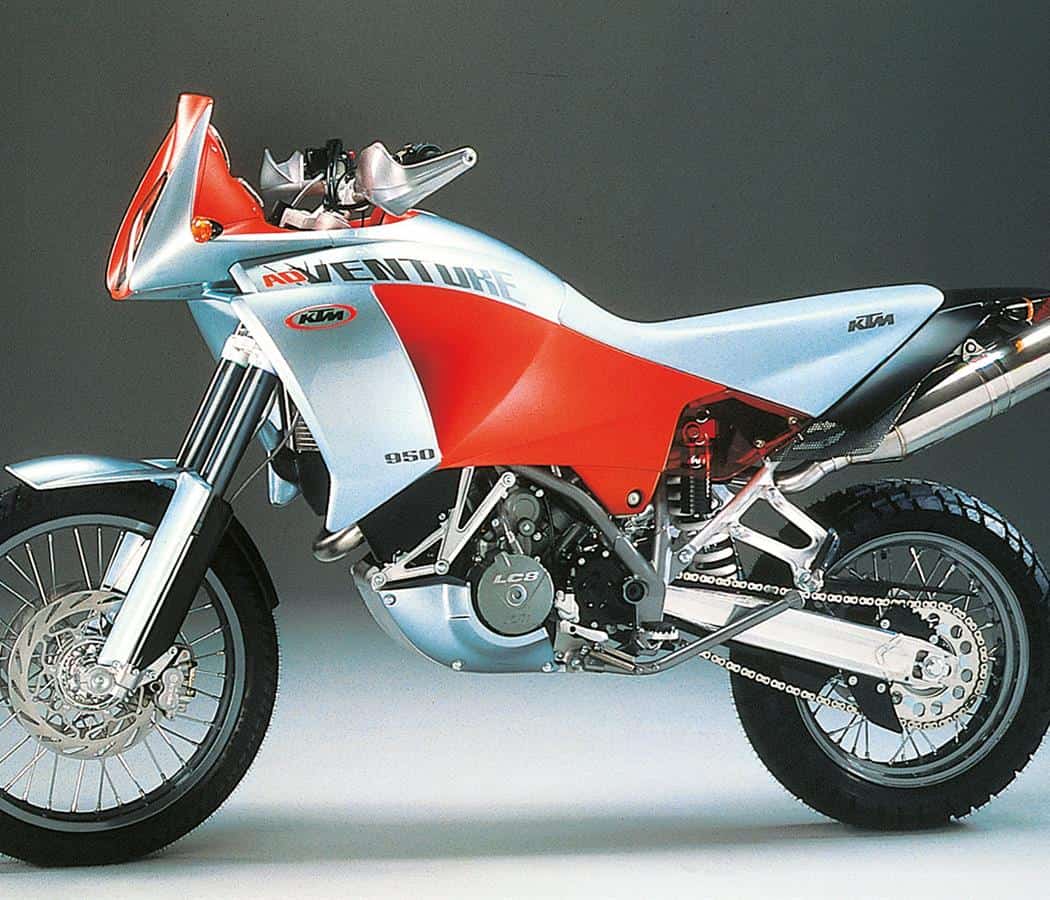
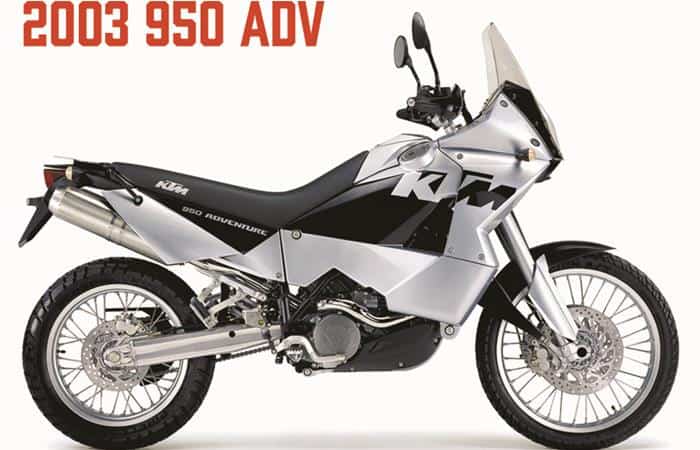
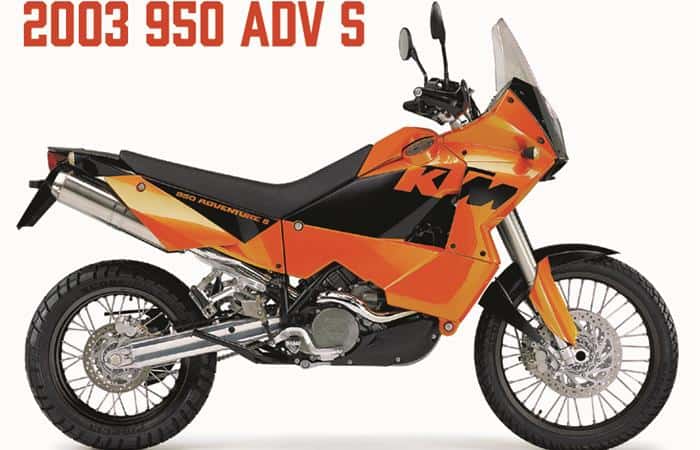
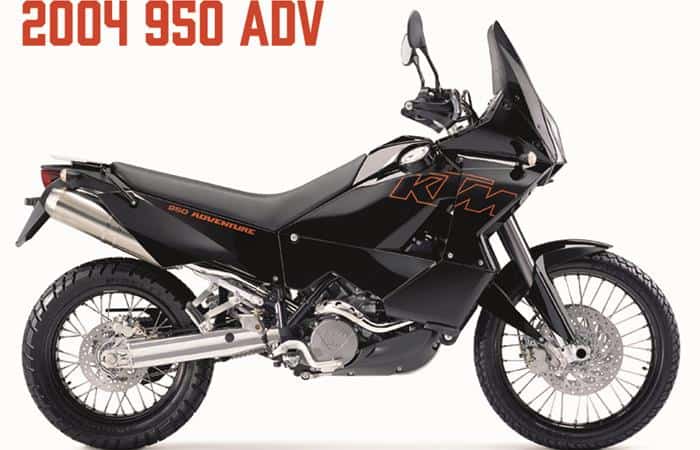
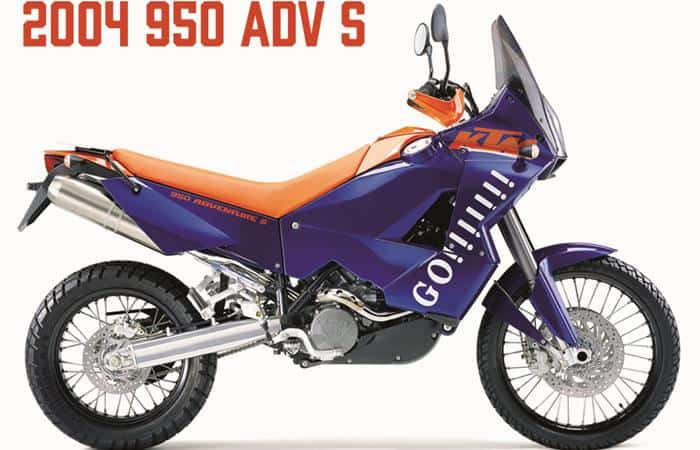
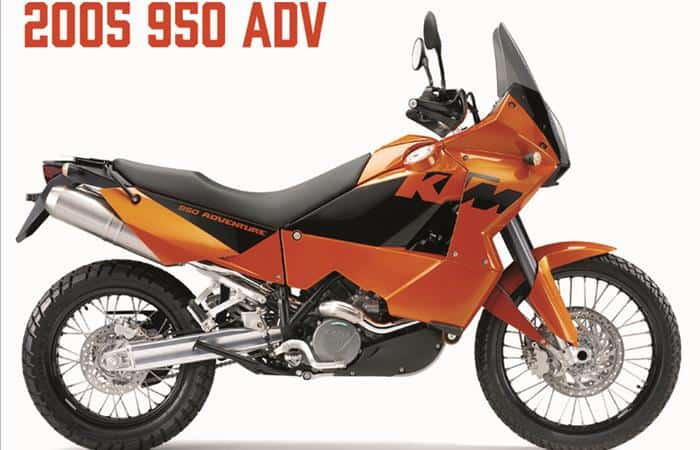
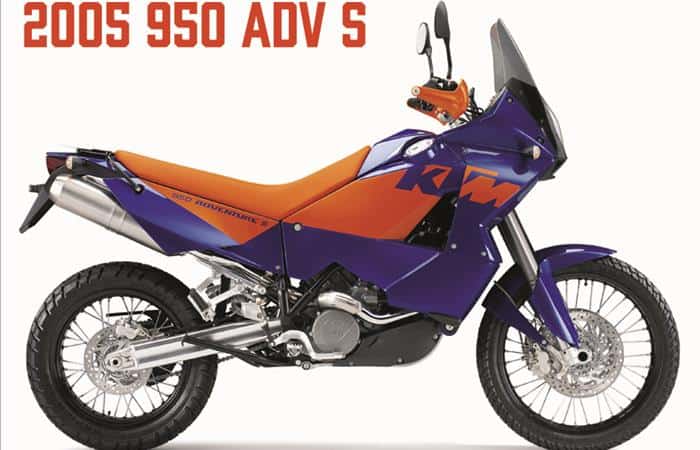
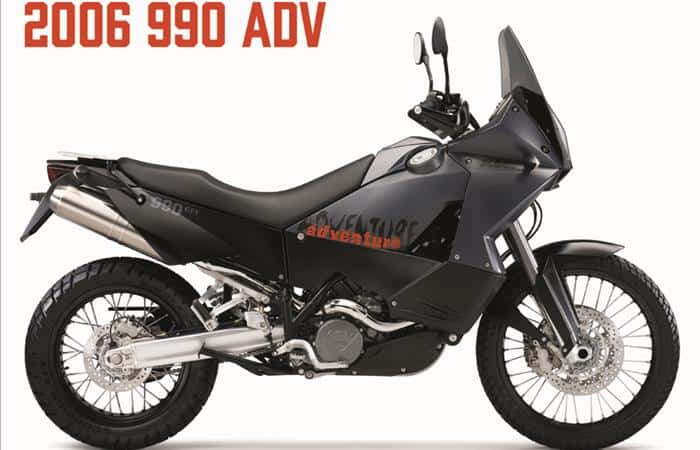
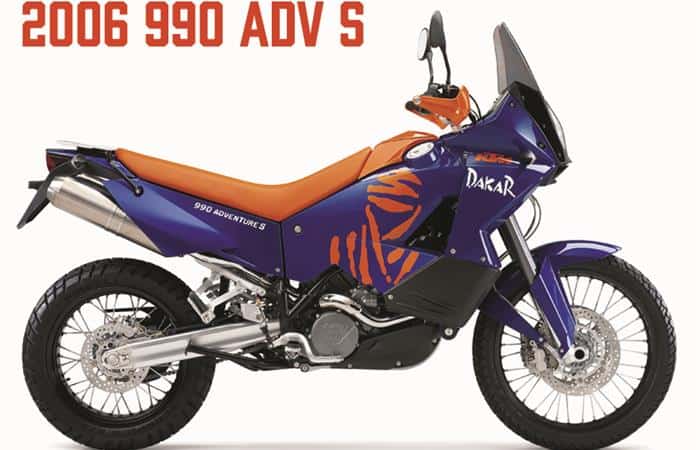
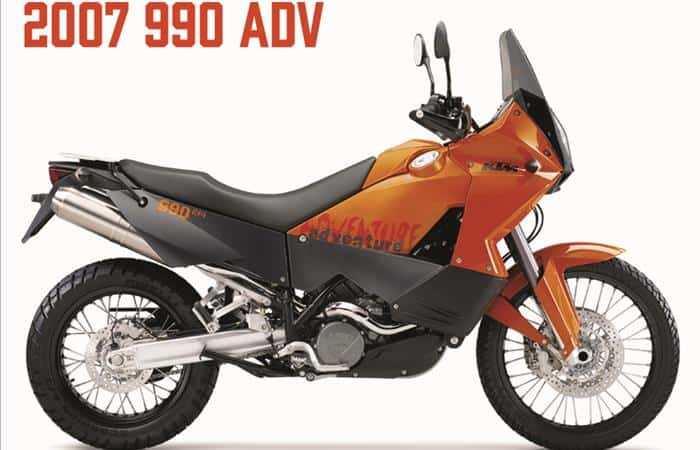
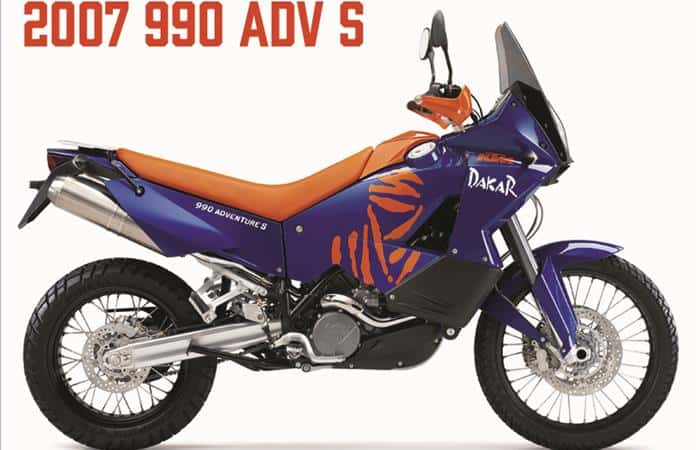
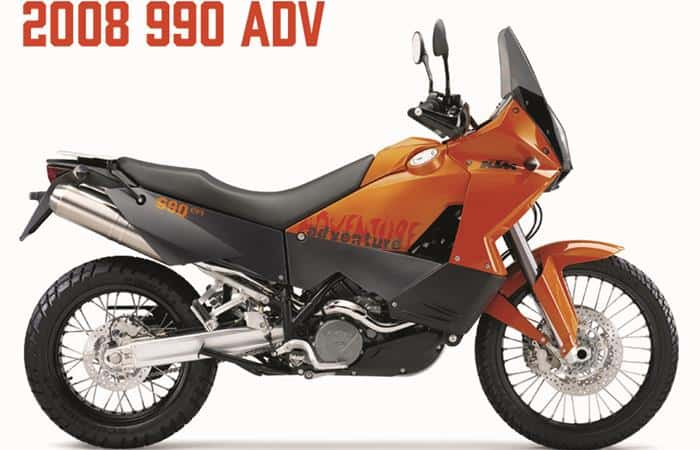
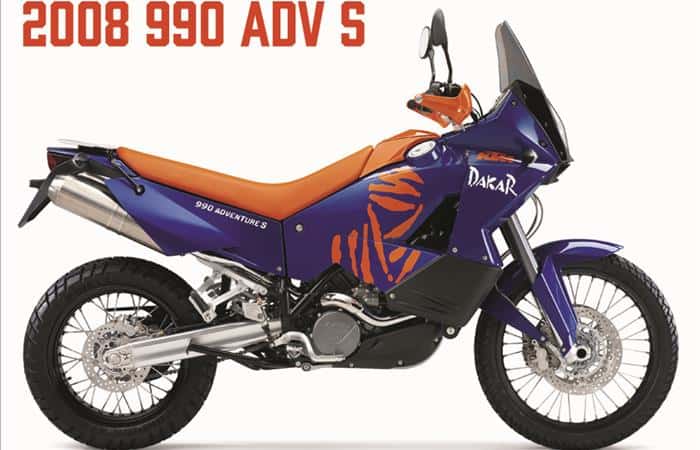
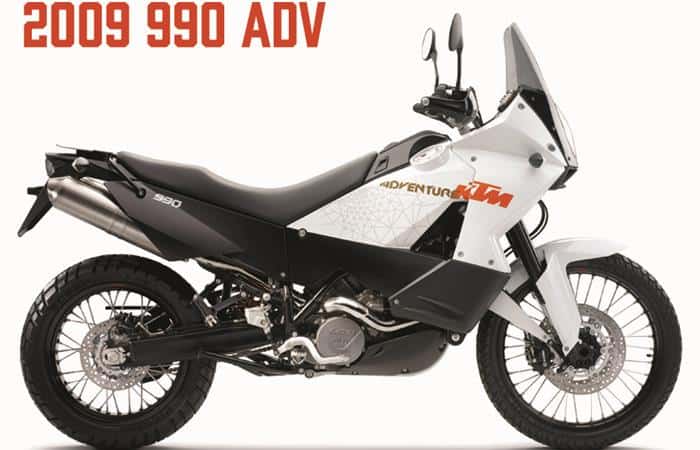
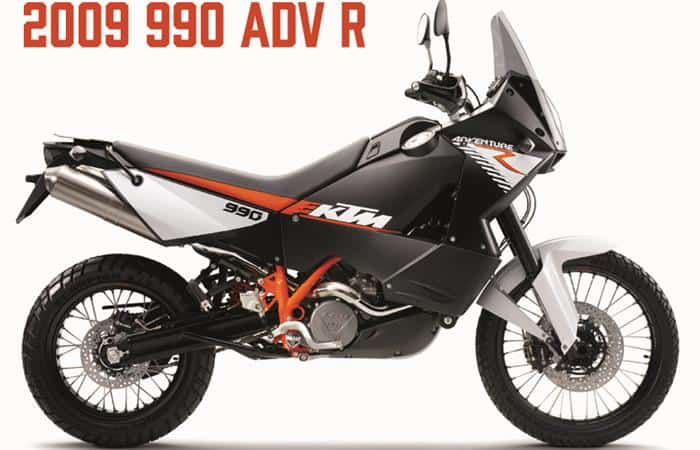
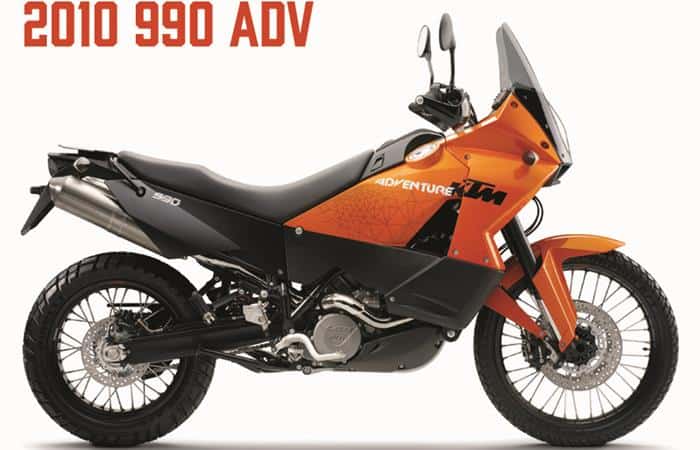
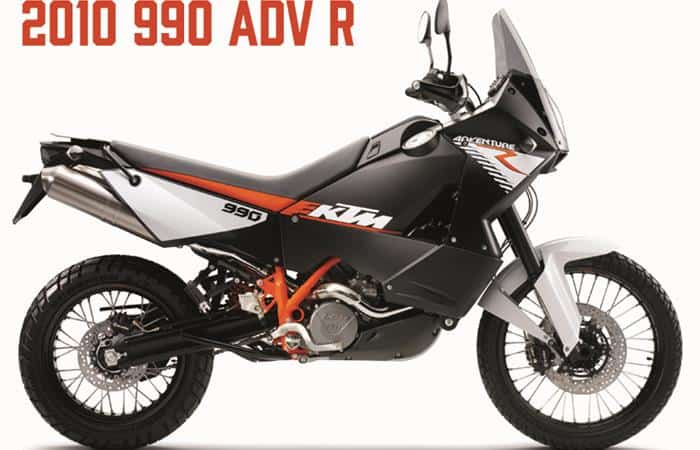

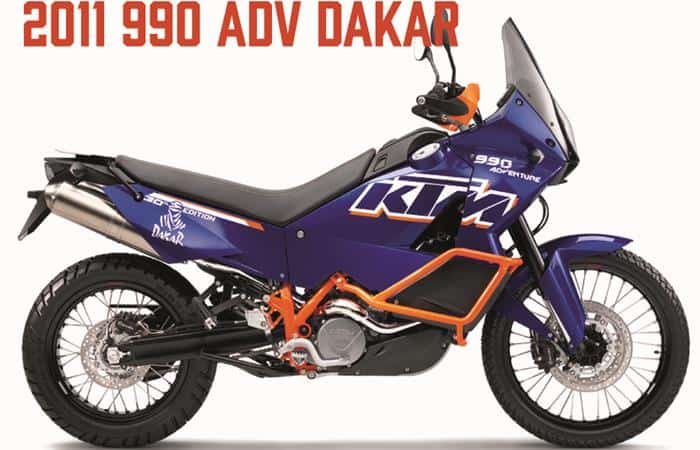
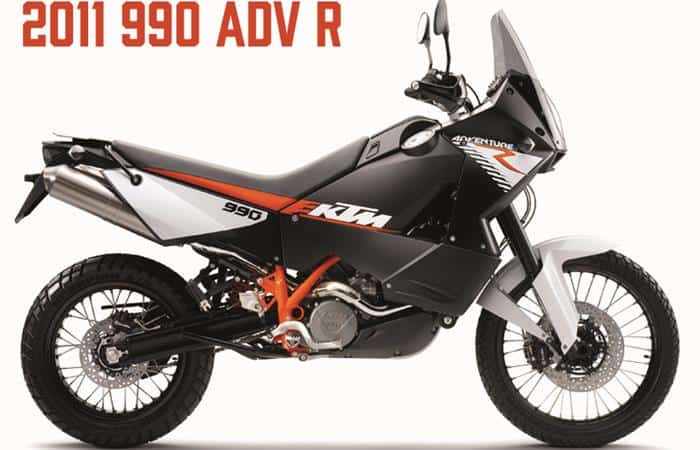
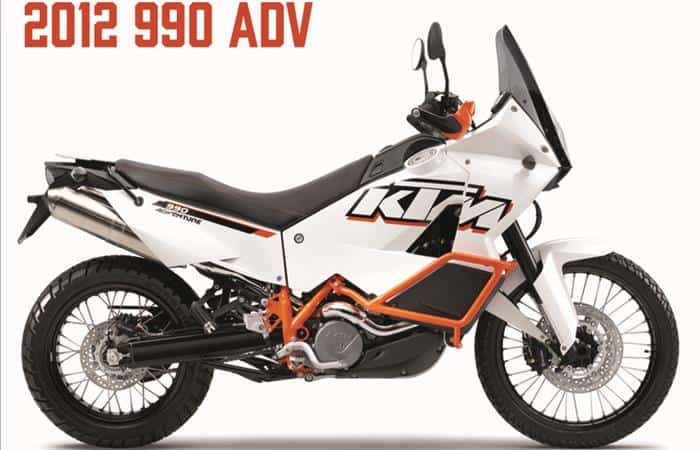
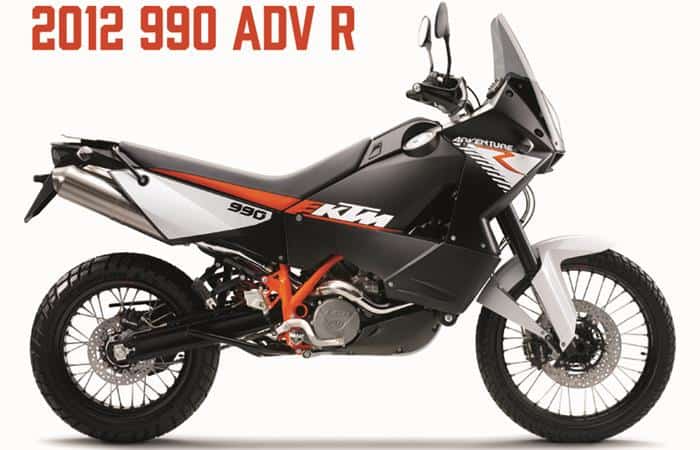
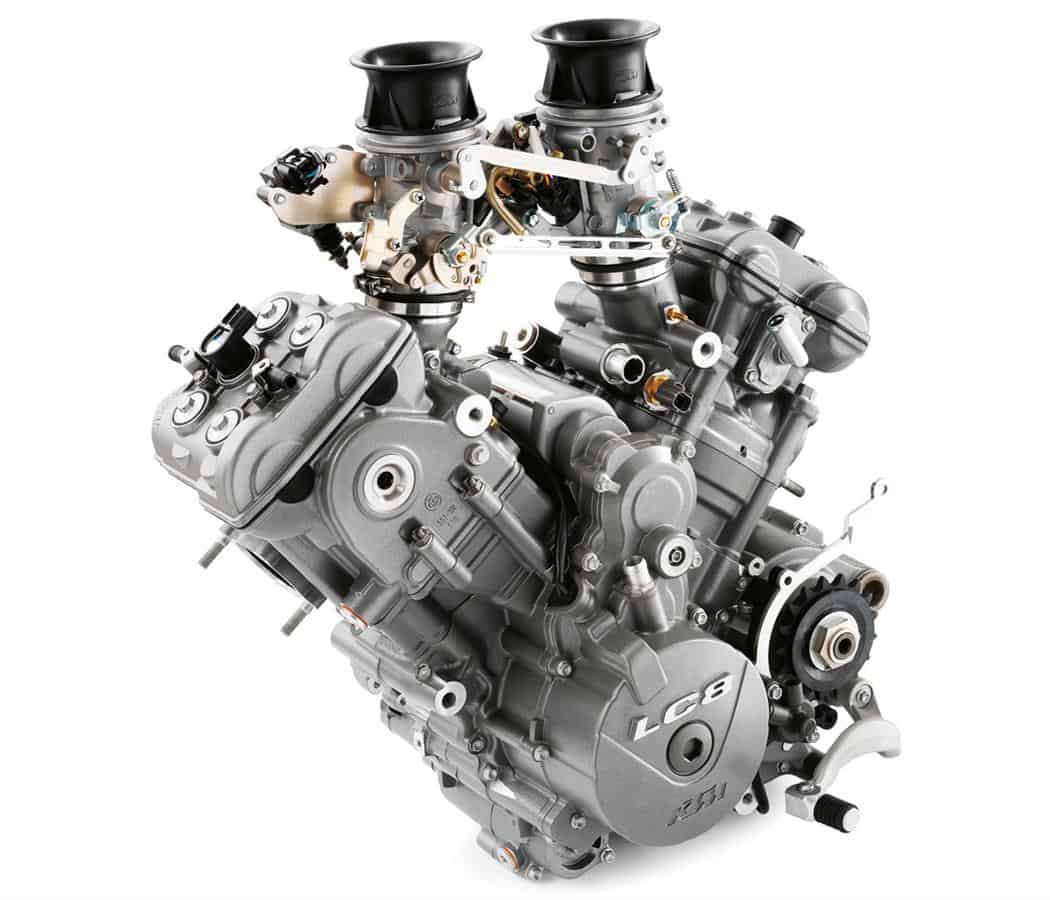
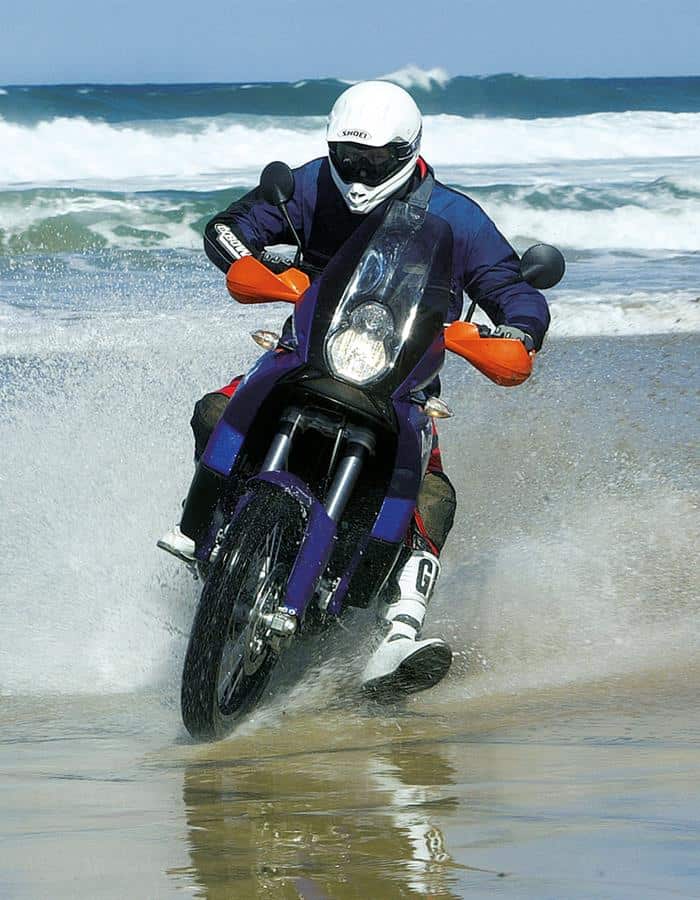
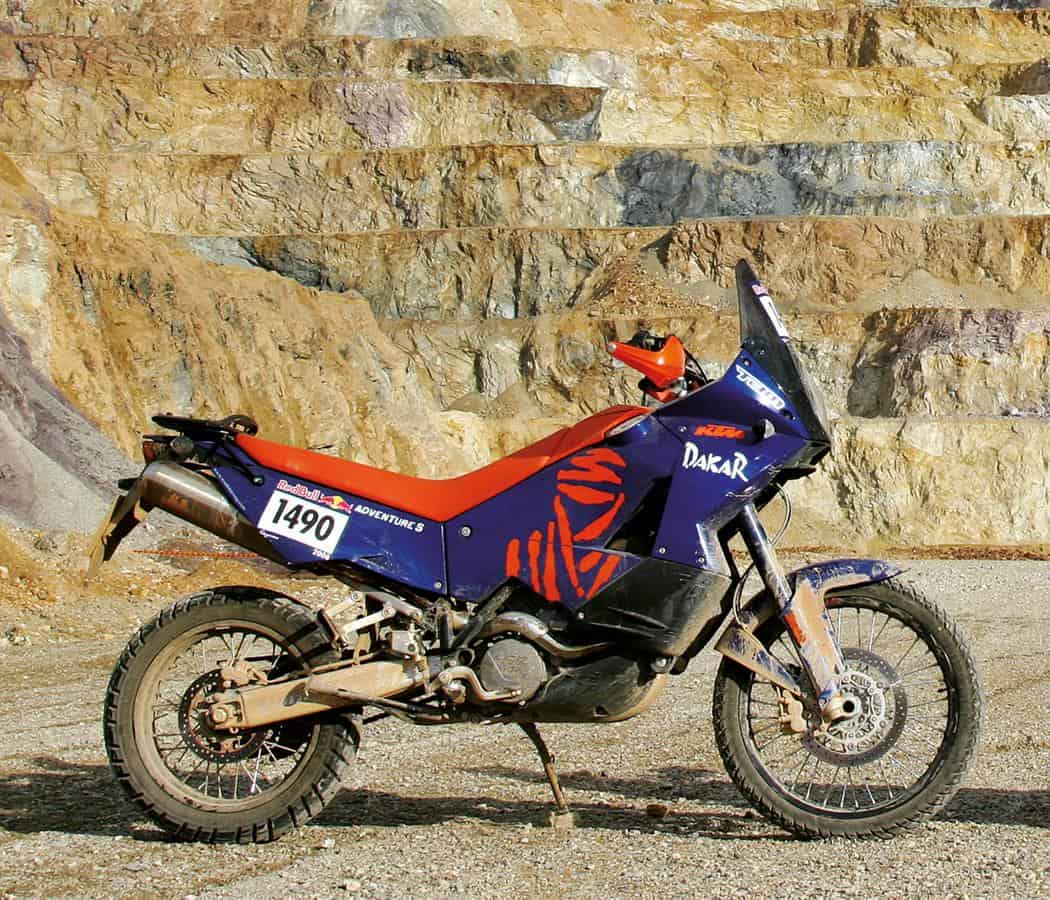
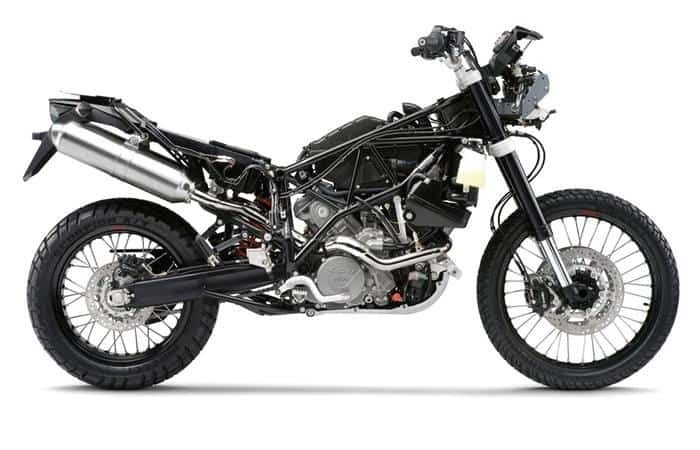
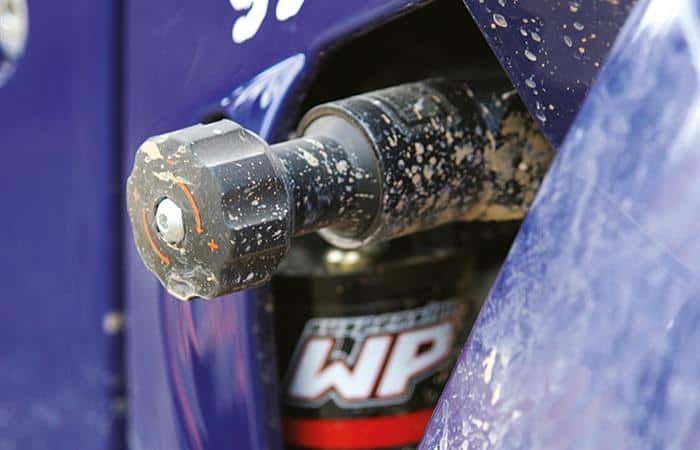


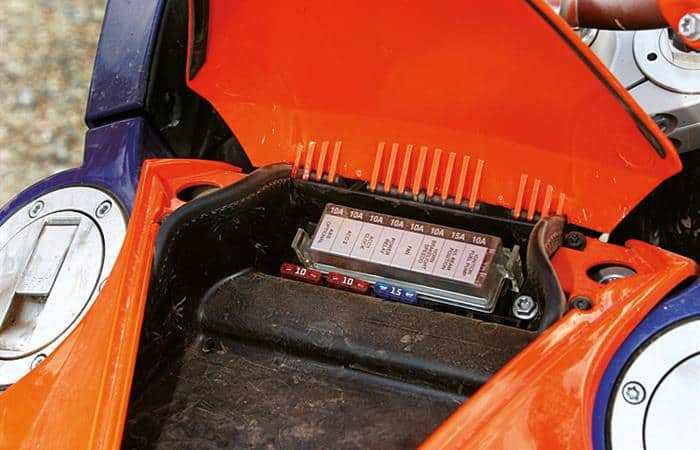
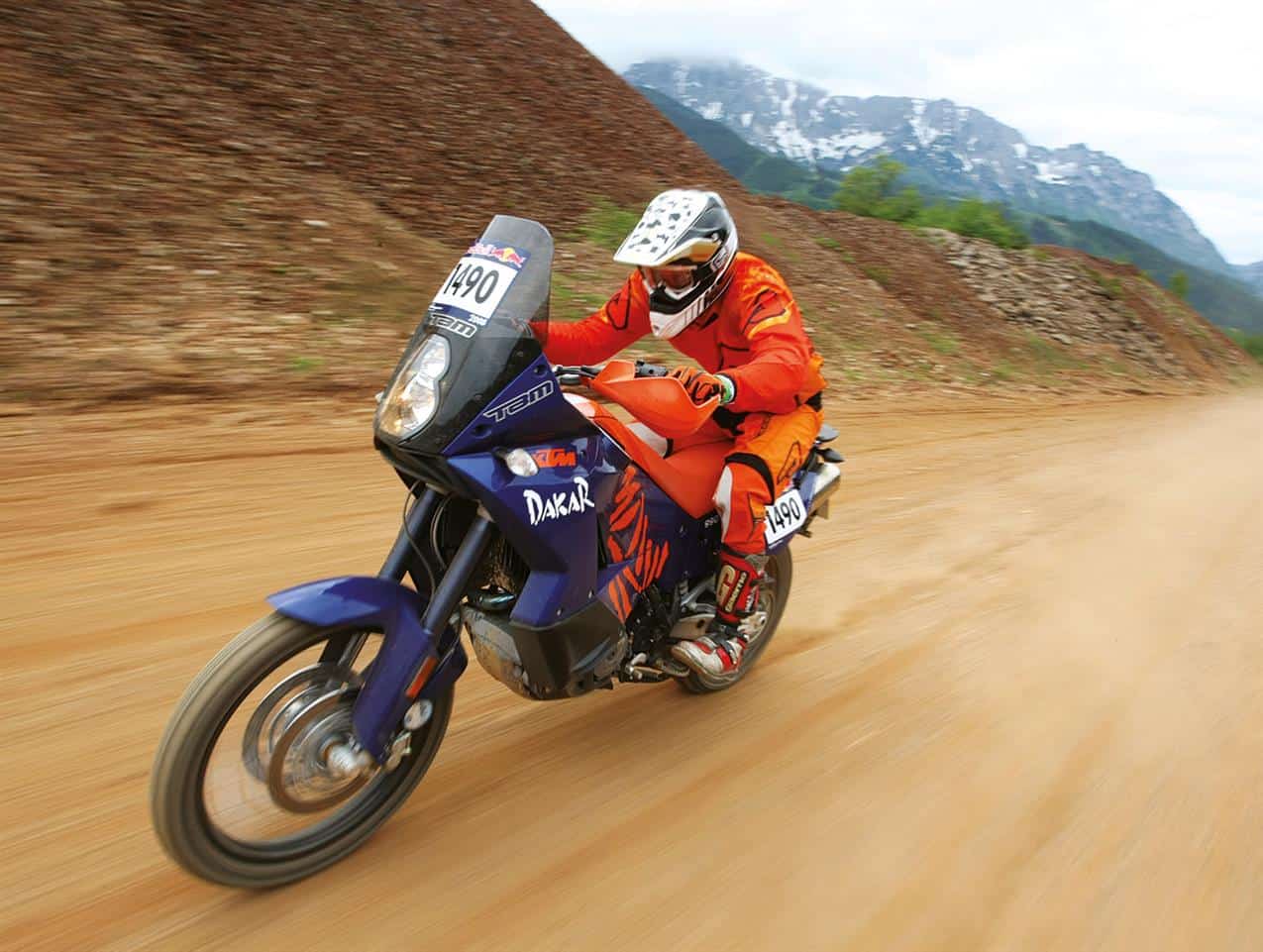
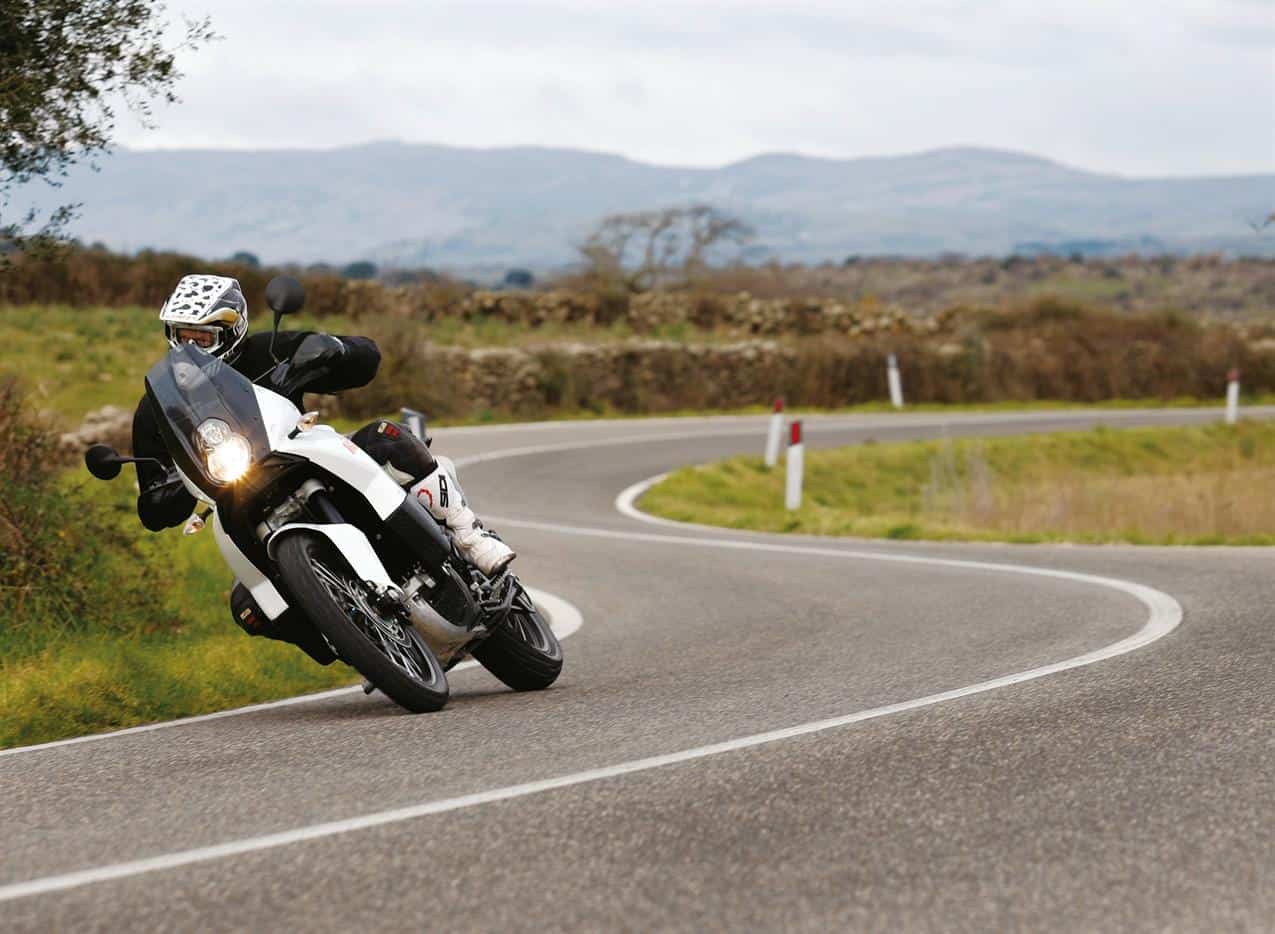
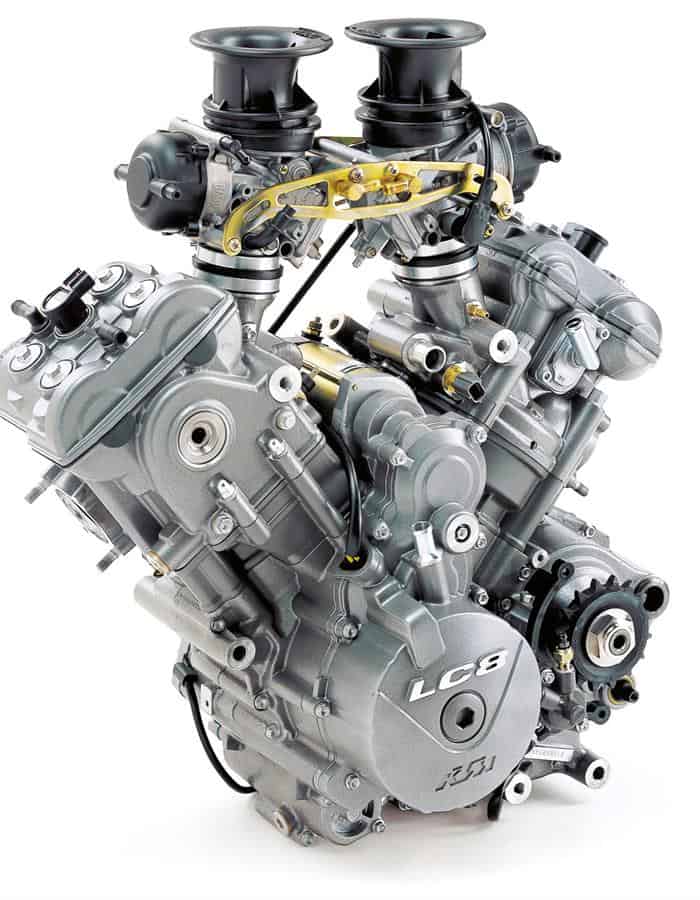
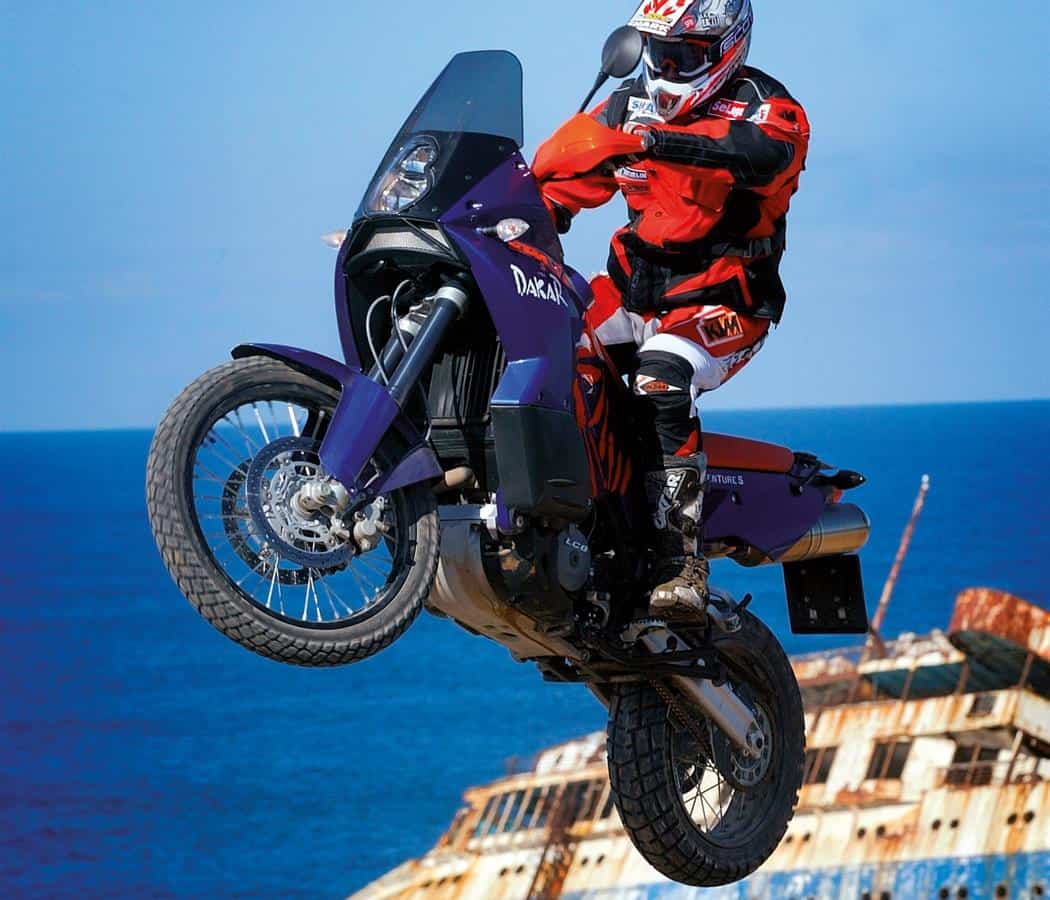
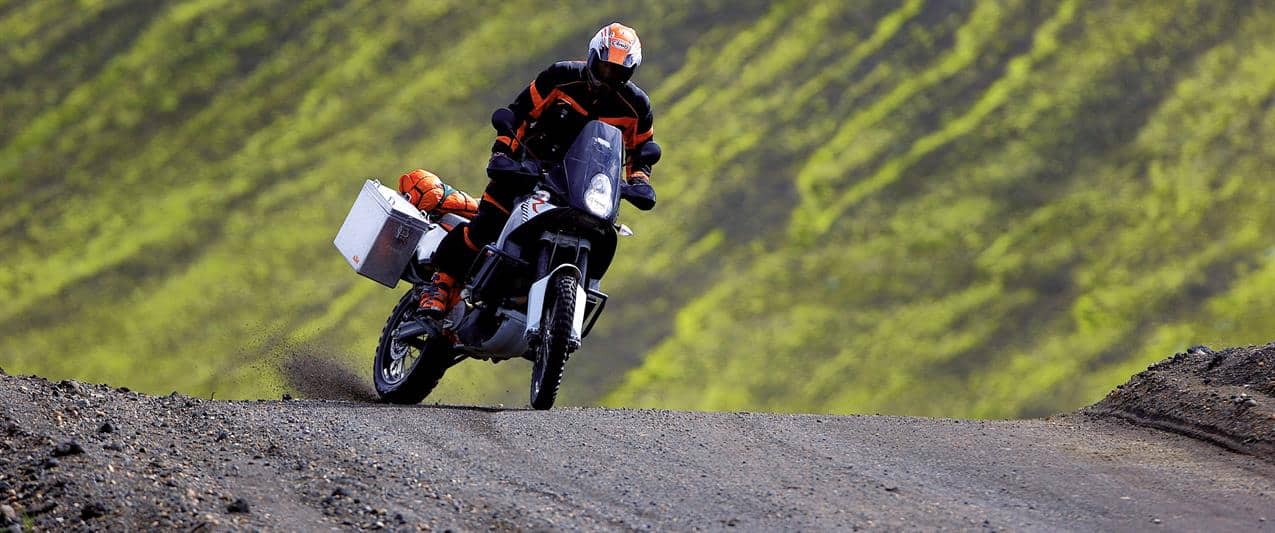
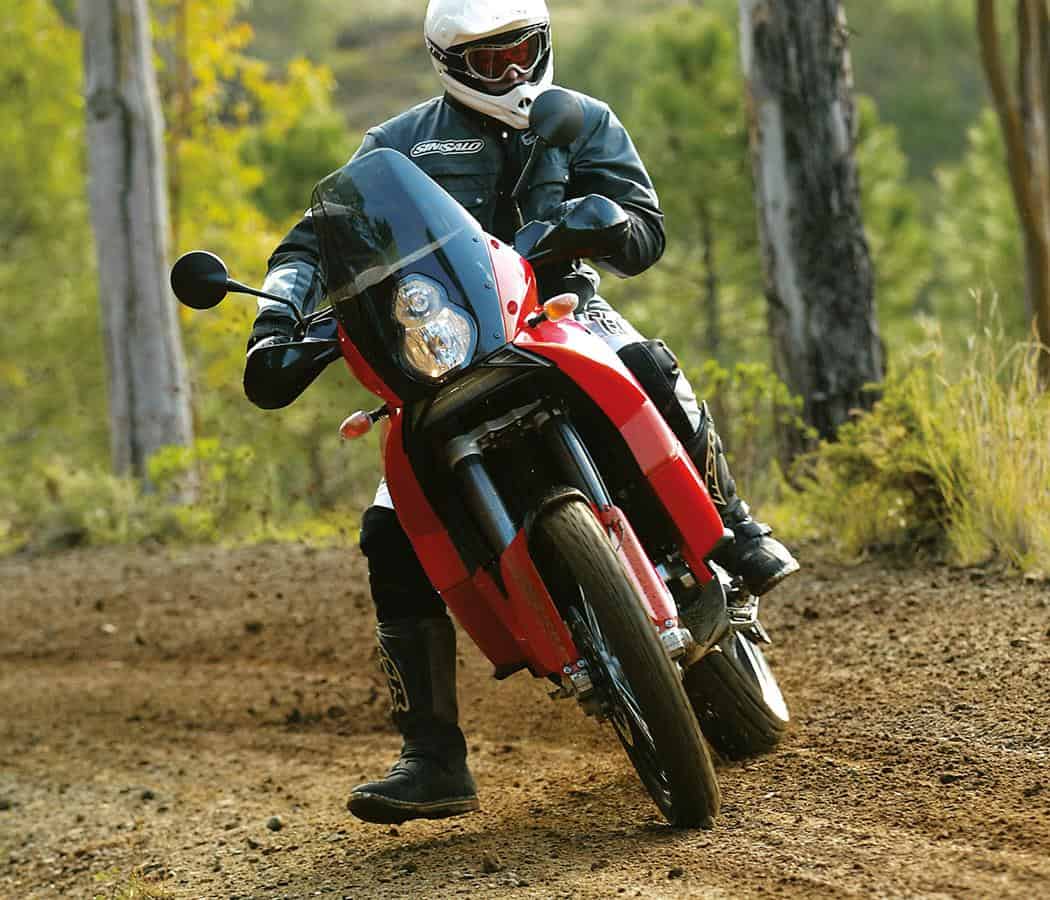

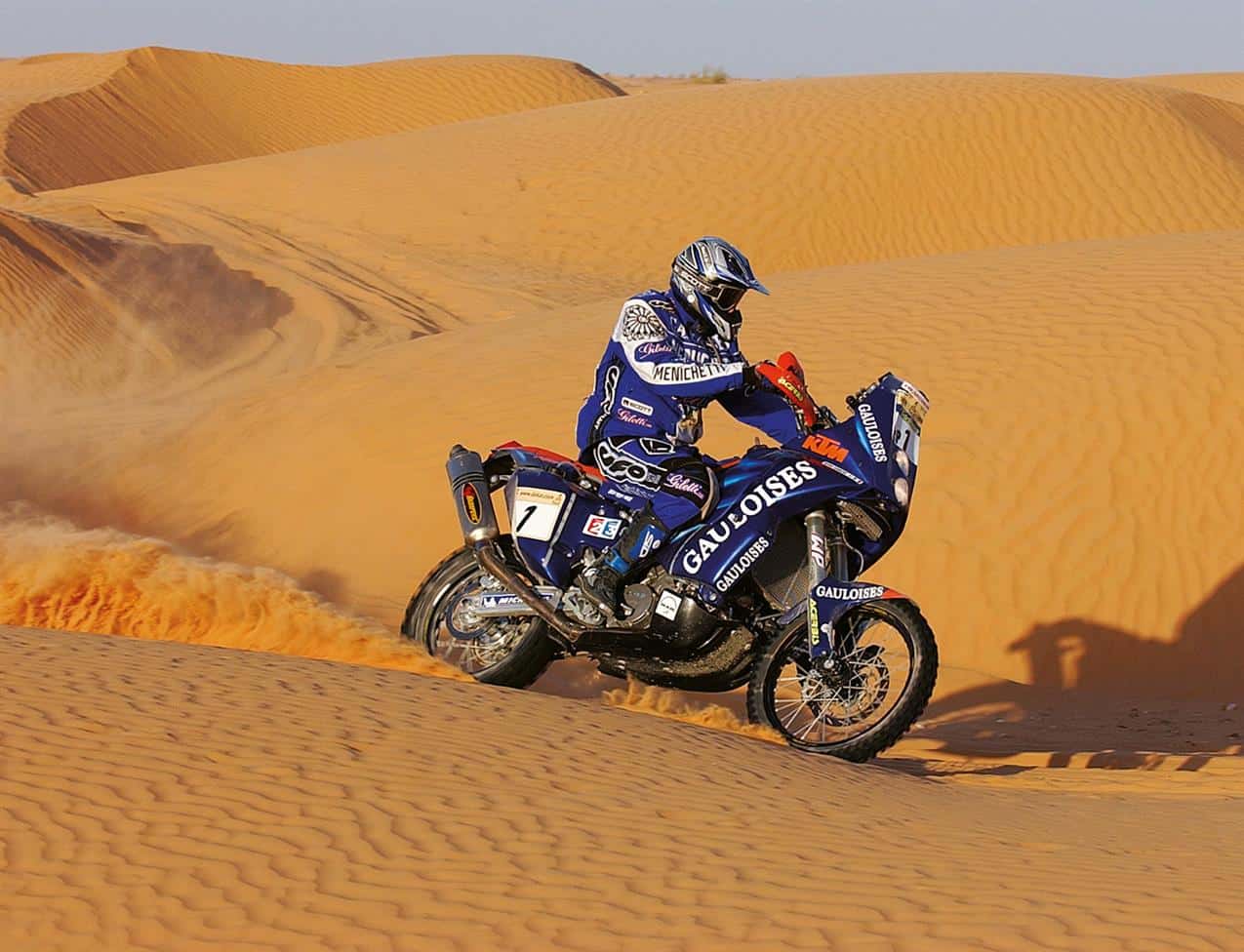
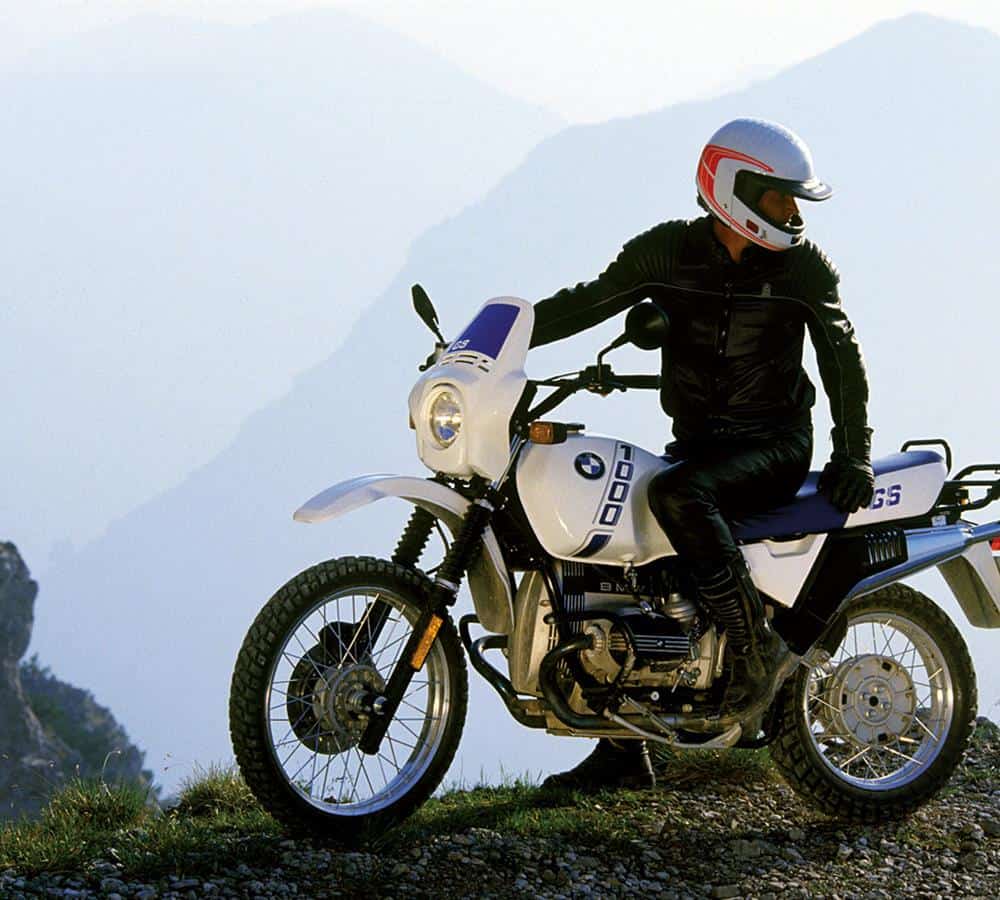
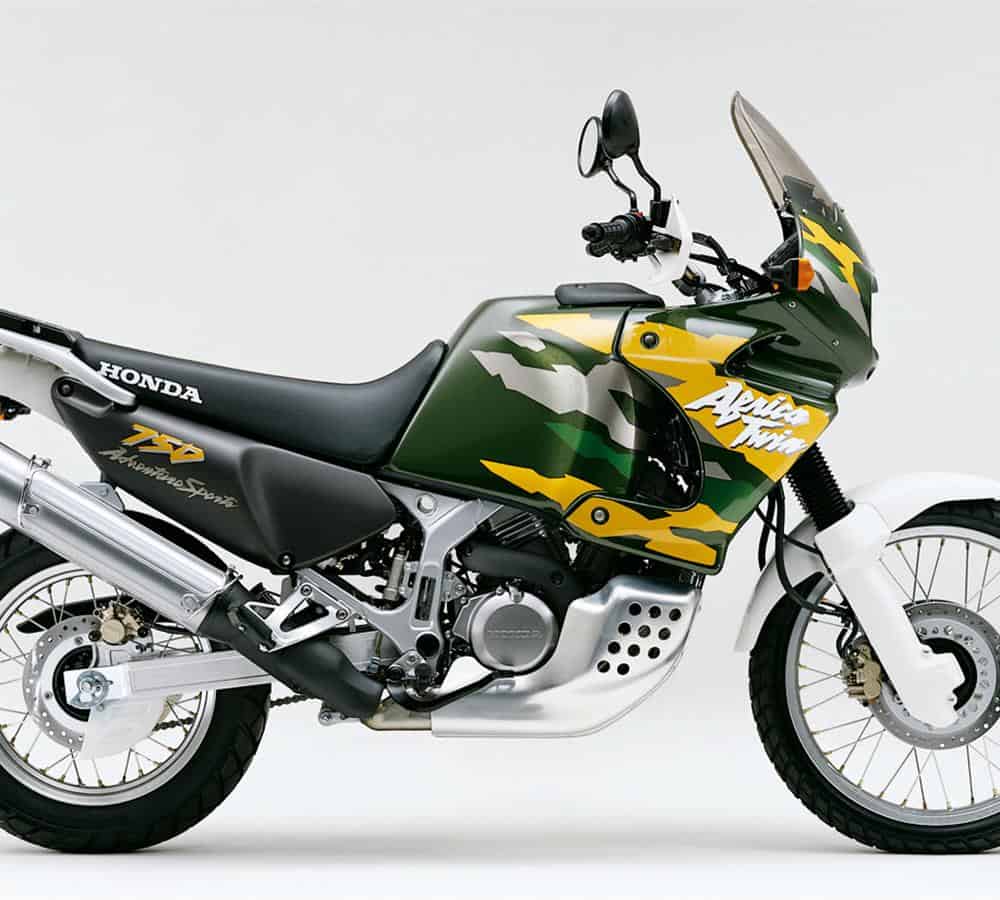
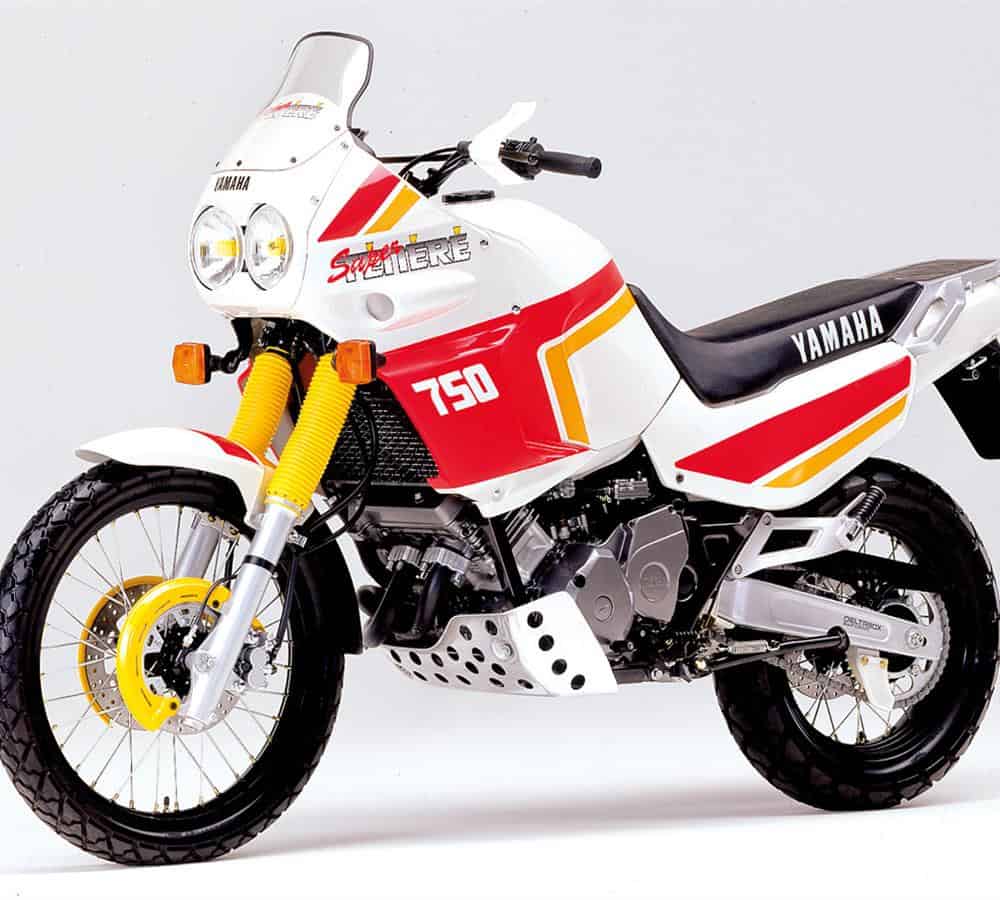
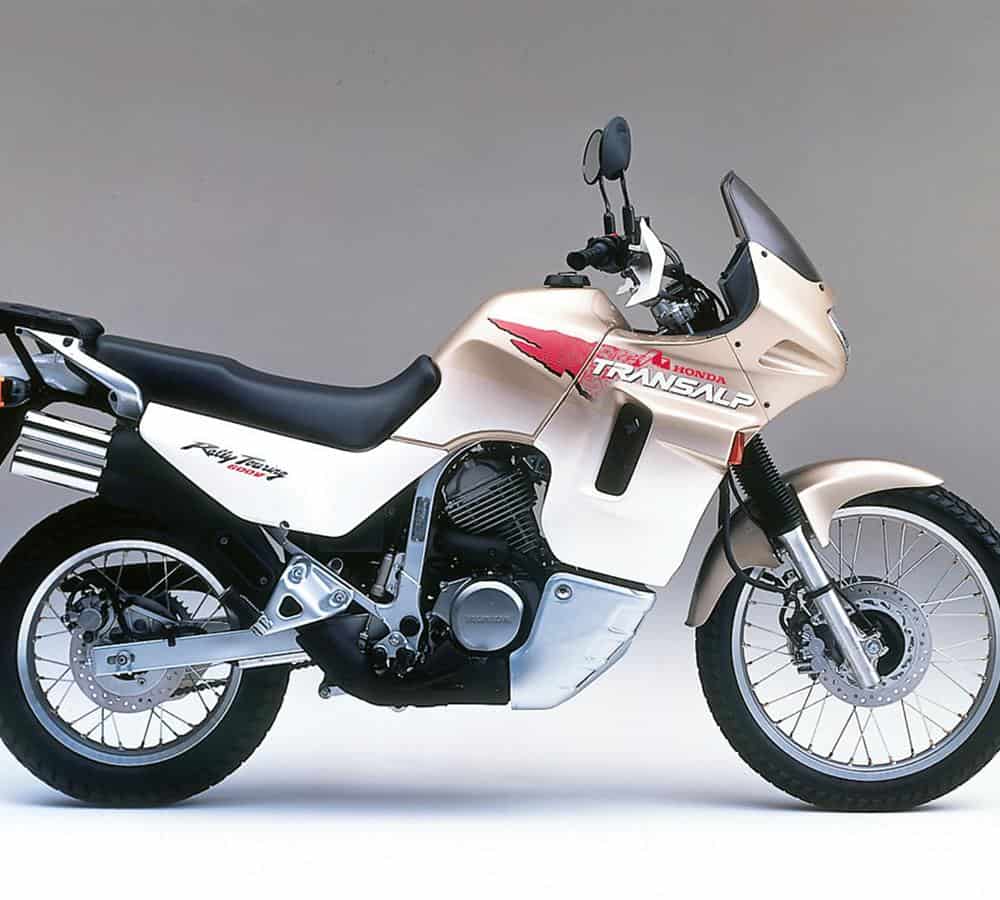

3 responses
https://www.locomoto.co.za/ktm-950-super-enduro-r/33-fuel-pump-kit-dr-bean-ktm-950-non-efi.html
Mate, brilliant read, have an 2010 here in New Zealand with 25k on the clock. Love it. Leo vince pipes with power commander. 116bhp on the dyno. Fantastic piece of engineering. Have just had the clutch slave cylinder issue rear its ugly head today on blast over the hill and back. 1st issue with the bike. Good to know of people out there, like you, that can help us define any issues that can rear their ugly head. Love your page. Cheers Richie .
Good day,
It was great to stumble accross these very interesting facts and figures concerning all the KTM’s from 2003. I really enjoyed reading through it and have one question please.
I do own a 2003 KTM 950 ADV. Being from Swakopmund in Namibia it is always difficult getting spares and service in these parts of the world. My question is, to replace the fuel pump is there another make besides the original KTM fuel pump that one could use to replace a faulty fuel pump?
We’ve had on two occasions a KTM shop in Namibia. At present we get KTM stuff from SA or abroad. We do have some of the other bike manufacturers with shops in Windhoek, but that is it. It will be great if I could know that for example a Suzuki whatever model fuel pump could work and fit on my bike.
Thank you so much for a fantastic article and I am looking forward hearing from you. It will be highly appreciated.
Kind regards
Dawid.